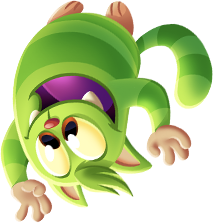It’s Time for Talent – with Tamás László
Hi, my name is Tamás, it’s nice to e-meet you! 👋
I joined Tactile at the beginning of September 2024 as a Backend Engineer. I am working on the LiveOps side of our games, which is where we continuously update the games, create tournaments and other in-game events, and it is also where the games communicate with our databases.
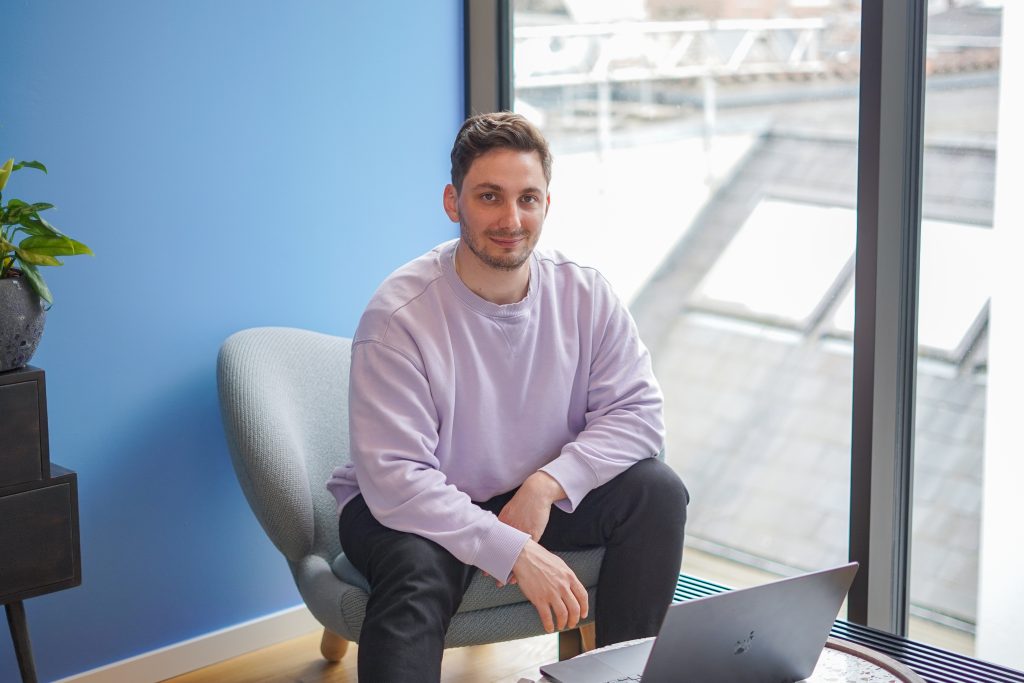
🌱 Before Tactile
I was a wayward child and was not into computer science at all. After I got my degree in plant protection, I felt like the geek in me wanted to surface, so I started to learn programming. Then Covid hit, so it was the perfect time to bunker in and go all in with the help of a coding bootcamp.
After that I found my footing in the tech workspace. I first worked for a small company and later a bigger, multinational company as a Backend Engineer for web applications. Since I’ve been a gamer for most of my life, when I saw that Tactile is hiring developers with web development experience, I knew that it would be a dream to get the job – even though I had no idea what LiveOps is 😀
💜 Joining Tactile
The first couple of months was a tsunami of information since the domain at Tactile is so specific to the mobile games industry. There were a lot of concepts to learn, even if the actual work that I do is very similar to my previous web development experience. On top of that, I also relocated to Denmark, so there were a lot of things to discover and get familiar with within a short amount of time. Luckily, Tactile supported me a lot in this period.
This is going to be the biggest cliché, but one of the biggest highlights of working at Tactile is definitely the people. On day one, I might have felt like the least qualified person in the room (which can be a good thing in itself!), but everyone on my team was very friendly and welcoming, so I instantly felt like I belonged.
I have been here for eight months now and I have grown a lot, but I also still have some way to go. Having said that, I do truly feel like I am a part of the team and can bring my own ideas to the table. A recurring theme I noticed is that the company is still growing and we have ambitious plans which will shape how we build our services (not to give away any spoilers 🤫). It’s pretty cool to be able to learn together with a bunch of motivated colleagues about a topic none of us are that familiar with (yet).
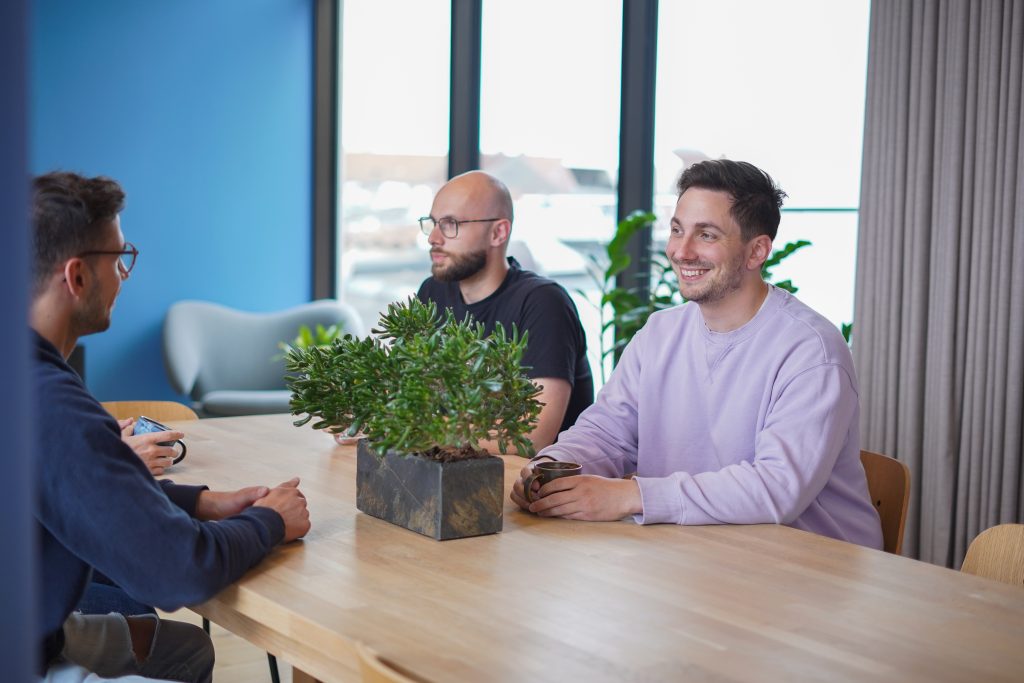
💪 Having an impact
As I mentioned before, my team maintains the LiveOps part of the games, which is – explained very simply – a tool for our product teams to create events in the games. This tool, written in React.js and Node.js, also enables them to interact with our players via push notifications or support messages, along with a bunch of other things. On the other side of all of this, our games are communicating with the shared backend, which we develop, in order to get all the data that needs to be shared between the different systems and devices.
My favorite part of working with the LiveOps team is that we harbor a very professional attitude towards programming while maintaining a light hearted atmosphere and having loads of good laughs.
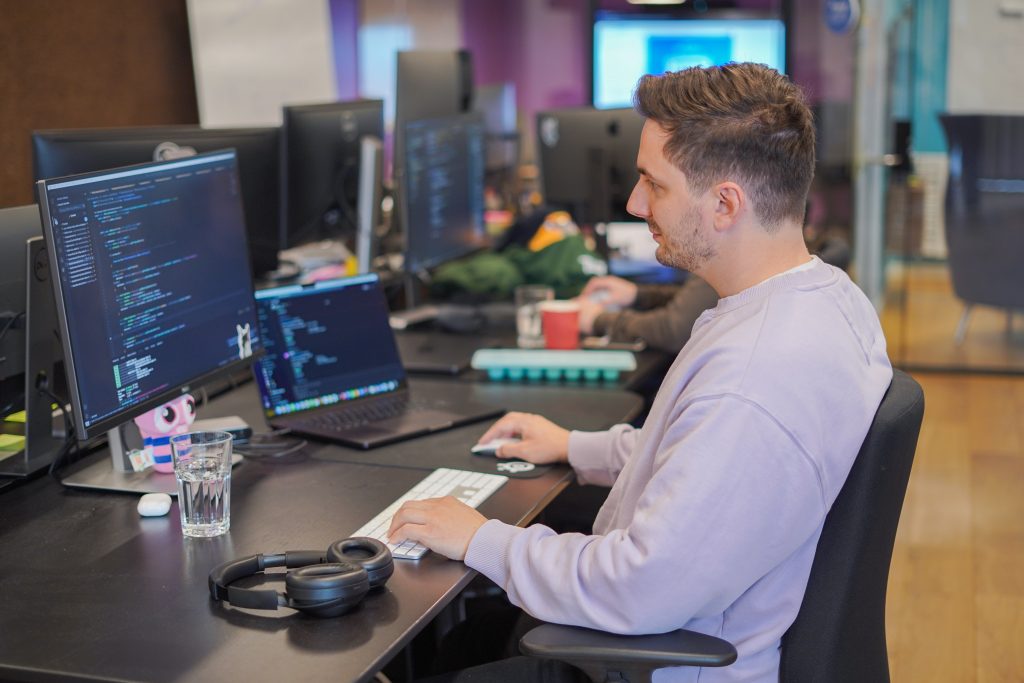
To elaborate on what I mean by that, we have weekly meetings to align on coding standards and to help each other with solving issues which we’re currently facing. We hold book clubs to keep ourselves up to date and keep flames of motivation blazing. We believe in going well instead of going fast, and we assign resources to improve the quality of our codebase well ahead of time, not when the walls start to crumble.
🚀 What can you do at Tactile that you can’t do elsewhere
One thing that sets us apart from other companies is definitely the amount of cake we consume on our floor – it probably goes well beyond the industry standard 🤣 I would say that Tactile is a very good place to bring out the best in you. In my experience, we take our profession seriously, but nobody tries to act like they are better than the others, which creates a space where you can safely share your ideas and be a part of the team, not just a cog in the wheel.
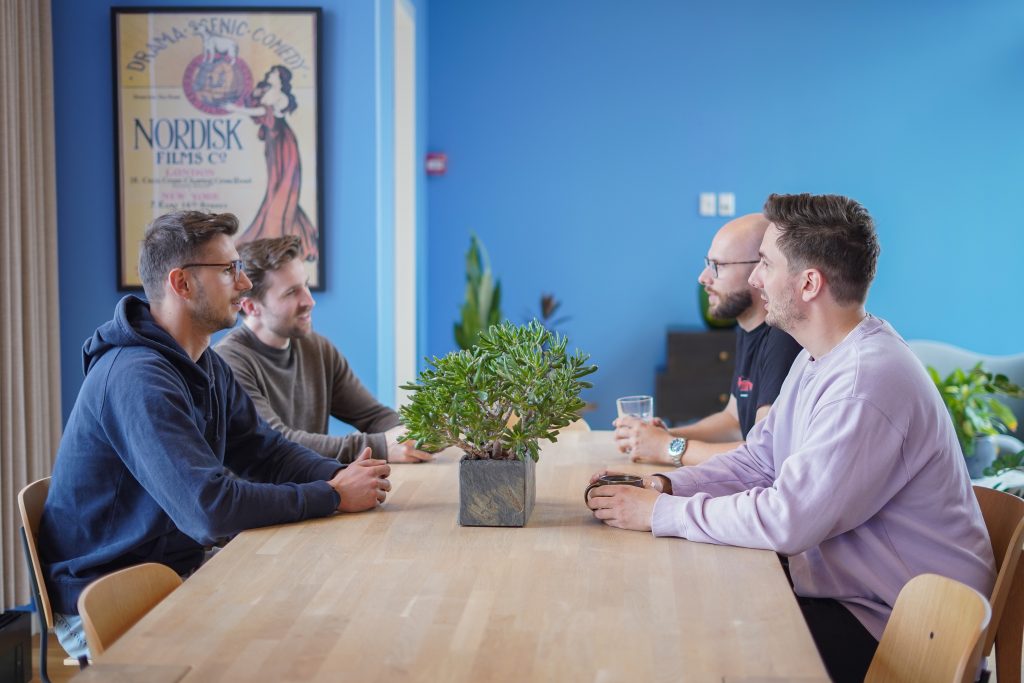
💡 The keys to success
I believe that now more than ever, it’s important to have a good understanding of how systems work, instead of what is the syntax of the latest JavaScript framework. I believe that most workplaces look for this at the moment, since anybody can ask any large language model to build the next GTA, but if you don’t know how it should work, you probably wouldn’t get very far.
When we talk about product in general, we are most often referring to something that is useful to have. In gaming, the view of product is slightly shifted. Playing games is not ‘useful’ per se, but a game as a product is something for users to play with and enjoy. It is entertainment.
When we develop new gaming products, we have to think about player behaviors, in particular the ways in which we can engage them and keep them in our games. Because we make free-to-play games, and want them to be accessible to everyone, this makes the challenge even more difficult.
How can we design and build a product that is free to play for everyone, where every aspect of the game works as the users want and expect it to? How can we then turn user behavior into actions which will in turn be profitable for the company? These are the types of questions driving decision-making of our Product teams.
To dive deeper into the world of Product in mobile gaming, we talked to one of our Product Managers (PM), the lovely and talented Ecem. Since she joined us in early 2024, Ecem has been a key part of building-up Lily’s Garden, and has more recently switched to supporting our new game productions.
Ecem’s role as Product Manager covers a wide span of responsibilities, including new feature development, working closely with level design, A/B testing of existing features, configurations and even analytics. She’s basically responsible for everything new that is being developed in the game, as well as releasing new features and ensuring that they perform well and keep improving once live in the game.
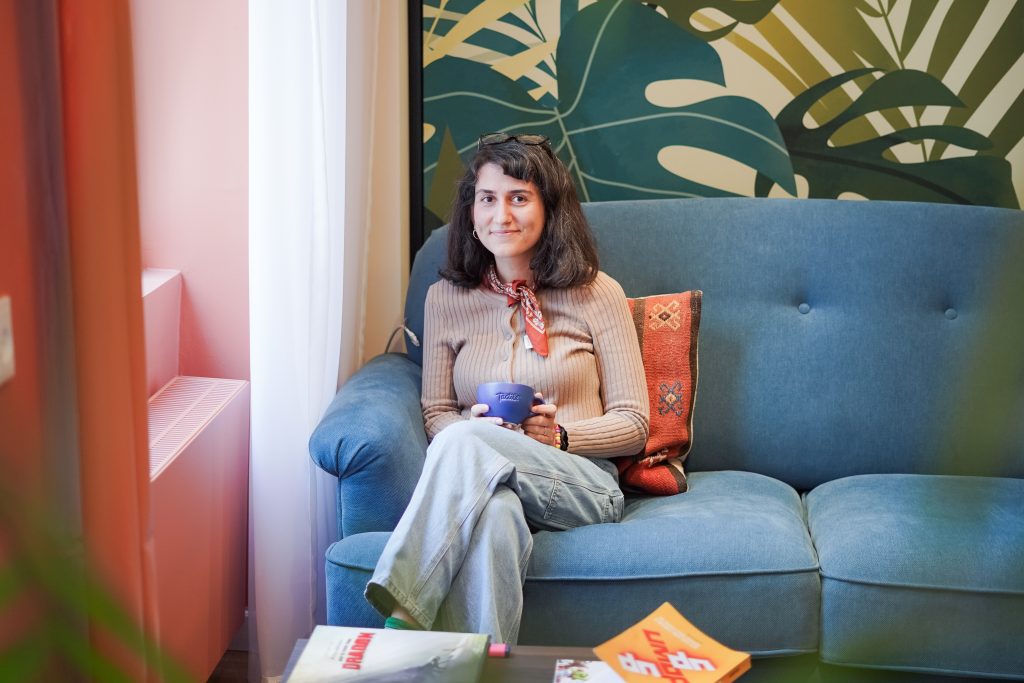
Let’s dive deeper into how Ecem and our Product teams do that.
New feature development
In free-to–play (F2P) mobile gaming, coming up with a new product (new game) is just the starting point. As mobile game players typically engage in shorter play sessions and show different play patterns compared to console or PC games, the developers need to find a way to maximize the time that the players spend in their game. This is why there is such a huge focus on live game operations in the industry right now – continuously releasing new in-game features and new ways of playing makes a game feel alive and keeps the player experience fresh and exciting.
A live game will make players spend more time in it and this extra investment of time will help them unlock more achievements in the game (both in the short and long term). This is where the psychological aspect of user experience comes into play: Our time is precious and so the more time we spend doing something, the more likely we are to invest into it even more.
Understanding the game
For Ecem, as the Product Manager, the first step on the path to achieving this is knowing her game really, really well. She does so by playing her game and its key competitors every day, following the data (it changes on a daily basis) and questioning everything she sees. ‘I always ask myself, what am I seeing and why? Why was this data point at a different place yesterday, how has it changed over time, and where would we like it to go? This is what’s driving all of my decision-making,’ says Ecem.
And this does not apply only to her game, but also to the industry that we operate in. Being familiar with our key competitors and what they are doing is important because it helps her to understand where others have found success and why. This is not in order to copy what others are doing – we shouldn’t include a concept into our game just because it works well for someone else – but we should understand their decision making behind doing so and how this could potentially be translated into our own game.
Understanding the goal
After understanding the product and the market we operate in, it’s important to understand the end-goal of any new product developments we’re making. Why do we want to add a specific feature or a new event to the game? Is it to fulfill a more short-term goal, something that is linked to our core gameplay (i.e. collect 100 specific board pieces in an hour, either as a single-player event or a tournament with a leaderboard). Or is it to achieve a long-term goal, such as engaging players in the narrative of the game?
Whatever the end goal might be, the new feature should tie closely into that. Some features are scheduled and present in the game for a limited amount of time, others are in the game all the time and players can engage in them whenever they wish to (like the indoor redecorating feature in Lily’s Garden). They are both equally important and have to be balanced in the right way, as they impact player experience. And as we’ve already learned, player experiences impact player behaviors, which in turn impact the engagement and monetisation aspects of the game.
Understanding the feature
Once we understand our end-goal and what we want to achieve with this new feature, it’s important to really focus on the market again and see what our competitors are doing. This doesn’t have to be only other games in the match-3 genre. As long as we share the same goal, any game is relevant. If we’re able to translate what they are doing into our own environment, we have created something unique.

From development to release
The development process of a new feature starts with building its wireframe. To do so, Ecem will have a long discussion with her product team to understand how feasible it is to build such a feature. What makes sense to build with the resources we have available, and what new resources might we need to make the feature come to life?
Minimum Viable Product
Once the wireframe has been agreed on, the team starts working on the MVP (minimum viable product), following the agile development approach. At this stage, we do not yet know whether this feature will work for us. To achieve this goal, we must first understand what we need to build as a minimum. We have a certain amount of resources to do so – a certain amount of time, a team including programming, art and UI, as well as a limited focus (for example, developing only the core of the feature for the first MVP).
The level of polish going into the MVP will very much depend on how ‘old’ the game is. Releasing a very unpolished, raw prototype of a feature in an older game that is already very polished is a no-go and might cause more damage than good. In a newer game, which is not so scaled yet, however, we can release less polished prototypes and test them out.
Testing
When the MVP is finished and released, the team moves into testing. Ecem, as the PM, now needs to develop a strategy for the testing process. ‘When choosing a test for the MVP, we need to make the choice carefully. Testing any new feature in the game can have an impact on our revenue, so we need to be very specific when we’re setting up the test. We need to make decisions around what country we want to launch the test in, which user segment we wish to target and so on,’ explains Ecem. This is where the close collaboration with the data team comes into play. The PM and the data analyst(s) need to be completely aligned before launching the A/B test to real players.
After that, the waiting starts. For this stage of the experiment, the PM must again know and understand their game and the goal of the new feature really well. At this point, Ecem and the team need to decide on how long they will run this test for. This is because the data test requires a significant number of users to participate in it, in order for the results to be valid. For example, if the team is testing retention, 1k users is enough, but for a monetisation test, they’d need a minimum of 5k users.
Understanding the results
Once the test results are in, Ecem and the team need to analyse what they are seeing.
If the test results are positive, but not significantly so (if we ask ourselves: Is this feature going to really push the needle in our game and the answer is no), Ecem and the team need to consider whether to continue with developing and testing the MVP. ‘I don’t want to push our product to a dangerous point,’ says Ecem, ‘so in situations like this, we really need to understand the test results well and decide whether we want to continue going with a larger number of users.’ What Ecem means by ‘dangerous point’ is exposing more users to an unpolished new feature prototype in an A/B test and risking upsetting potential buyers. Again, it is crucial here that Ecem as the PM understands how well established the product is. With an older game, she needs to take more calculated risks, but with a brand new product, she can potentially be bolder.
On the other hand, if the test results are incredibly positive and we have reached our goal (this feature is going to shift the needle in a big way), the team will increase the number of users in the A/B test and start polishing the MVP. Just as when things don’t go well, it’s important for the PM to understand why things worked really well with a particular feature. This is an opportunity to get to know our users better, especially if we were targeting a specific segment. The team can then use these findings and apply them to other features in the future.
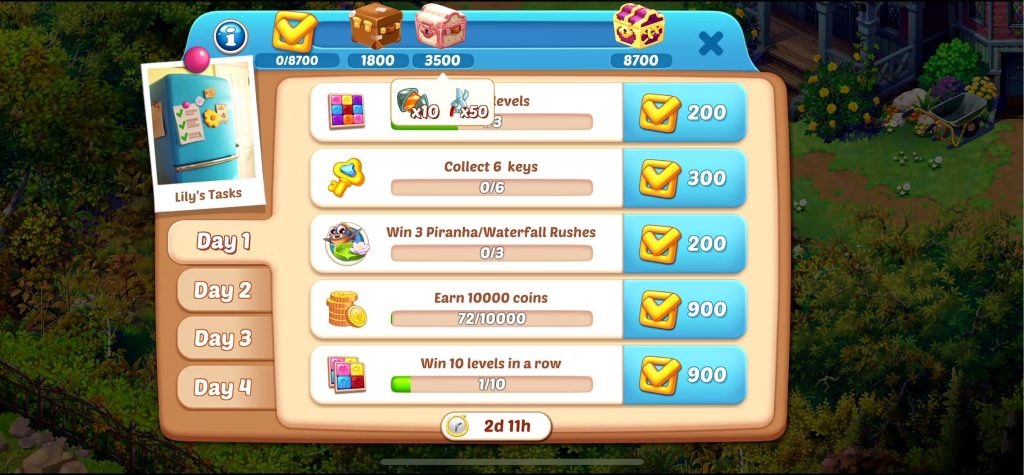
Release
After the initial test, the MVP will go through several iterations. The team works in a lean agile way and keeps polishing and testing until the feature is ready for global release.
Post-release (Live Ops)
The duty of our Live Ops team is to take the newly released feature and make sure it fits well into our players’ day to day experience of the game, optimising and tailoring it to different types of players to create the best experience possible. This is not an easy task. They need to first think about what kind of player behavior will be required to make this feature a success. After that, they need to find the right way to run the feature, so that it gives the best possible experience for players, as well as the best KPI improvements for the game. Often there is not a one size fits all solution for features. The Live Ops team needs to think about all the different types of player and playing styles that the audience has.
Already in the development stages of any new feature, Live Ops and Product teams need to be closely aligned. As our Live Ops function is centralised, they can provide the Product teams with the knowledge and insights from all of our games.
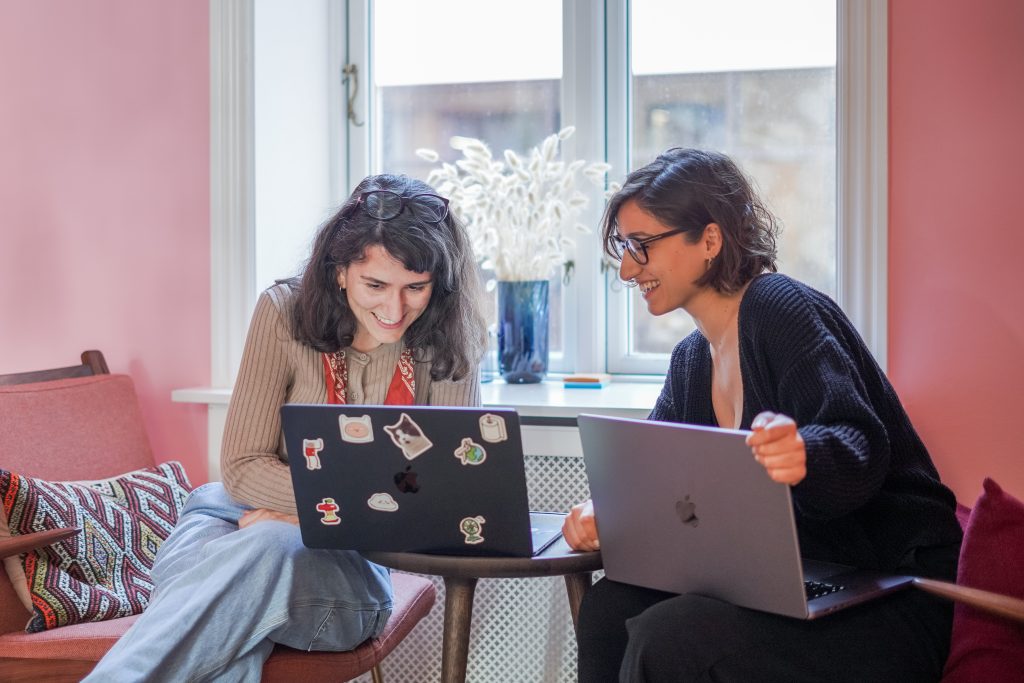
Our road to achieving LiveOps excellence
For 2024, we have set an ambitious goal for our Product and Live Ops teams: We wanted to release 1 new in-game event every month in Lily’s Garden. On top of this, we also release multiple features or updates to older features each month. This might have been a BHAG (big hairy audacious goal) and, depending on the size of the event or feature, not always a realistic feat, but ultimately, we wanted to get our production capabilities as close to this goal as possible.
This was important to us because having a wider range of features, events and offers enables us to create more tailored and varied player experiences within our games. We now have a strong Live Ops calendar filled with a variety of events, which has given the team a lot to work with.
The key component for us achieving this goal has been our lean agile development process and how we work with scrum. Changing our team structure and creating smaller, more effective scrum teams, led by our Product Managers, have been a huge part in us being able to achieve this goal.
So, what have been our key takeaways from this journey so far?
Key learnings
🔑 Test fast
Verify that the feature works as early in its development cycle as possible, before building it out more fully. We can use this early data to help make the feature even better and connect with players even more.
🔑 Using the whole team’s expertise
Within any Product team, there are different disciplines with different key focuses (art, development, QA), but they’re all part of making features a success, beyond just their discipline. It is the Product Manager’s responsibility to align them all, in order to reach their common goal. The different skillsets and mindsets should be used to make the overall experience for players and the performance of the features even better.
🔑 The Product Mindset
Everyone on the team needs to understand why we’re doing things in a certain way and where these decisions come from. If everyone fully understands the reasons behind a goal, they can make better decisions during its development. They also need to understand the different aspects of a product that all tie into making it a success, as well as the different types of players we have and their experience of the game.
🔑 Decision making
A PM in gaming does not have a single focus area and so will always need to have an overview of all the disciplines of product development (art, UI, programming, data, QA, Live Ops), and help drive decisions in all of them. A PM should not have an ego and be subjective in this process, but they should make decisions based on the knowledge of the game, the market and the general development environment they operate in.
🔑 Trust
The PM needs to build trust-based relationships with everyone on their team, as well as with everyone else they collaborate closely with (Live Ops, Marketing etc.). This enables them to fully align on their common goals and commit to them as a team. It also enables them to challenge each other’s decision making which in turn allows them to create the most optimal product.
Live operations (LiveOps) in mobile games have become a huge trend in the past years. We see many mobile gaming studios trying to make their game(s) look as live as possible by shipping as many new events as possible. For reference, when we launched Lily’s Garden, the general trend in the market and competition in terms of event diversity a game offers was not that high. Now, at least in casual mobile gaming, the leading games are producing at least 1 new LiveOps event per month! It has become a key differentiating factor for both engagement and monetisation – which are both deeply affected by in-game economy.
We sat down with Alberto and Mateus, both members of our LiveOps team, to dive deeper into the topic of live game operations. Why are companies spending so much time and resources focusing on this? How has Tactile approached reaching LiveOps excellence in the past years? And more – read below!
The three pillars of live game operations
Besides making the game feel alive, LiveOps make a game look new, fresh and cared-for, and most of all, they challenge the players in their routines by providing them with a variety of gaming experiences. And the impact goes even further than that. When players engage with different events, they are rewarded for their ‘new’ behaviours, which ties into the economy aspect of the game. This variety of events on top of the core gameplay and storyline (like in Lily’s Garden) engages the player in different timelines, throughout the day, multiple days, a month or even an entire season, which ties into the monetisation aspect of the game.
And so this brings us to the main 3 pillars of LiveOps – engagement, game economy and monetisation. All three of these have key relevance in running a live game because they all feed off of each other. Alberto, our LiveOps Product Manager, explains:
“Engagement refers to the extent to which players remain invested in a game over time. It’s crucial that players progress through the main core game as well as the events they encounter; that they feel the desire to come back and play more, and of course, that they have fun! This is connected tightly to game economy because we need to maintain a healthy balance between the rewards players receive for completing events and the resources they need to be able to do so. And finally, monetization is important as it gives players the opportunity to acquire more resources to complete challenging levels and events.”
Let’s dive a little bit deeper into each individual pillar:
Engagement
Engagement plays a key role in creating a well-balanced gaming experience for players. This involves designing a meaningful event calendar offering a variety of features such as single-player events, tournaments and team-based events. By incorporating diverse event types, the game can appeal to a bigger variety of players, from those who enjoy the social aspects to those who thrive more in competition.
Retention is a key factor in a game’s long-term success, and so we need to ensure that players consistently come back and play more. Keeping the game fresh with new events, well-balanced challenges and personalized experiences helps to maintain interest and to prevent player churn.
Additionally, engagement enhances the player experience by aligning events with the overarching game themes. Our LiveOps team therefore also oversees the creation of visual assets, including new skins, season passes, and other in-game items. In close collaboration with game economy, engagement ensures that event difficulty and rewards are well-balanced, which in turn creates a fair and rewarding gameplay experience.
Game Economy
Economy is focused on the inner workings of events, rewards and offers. It looks into how often players use the rewarded items, how much these items impact their progress in the game, and based on that, how we can properly assess the value of these items for future event set-ups. These inputs and analyses are fed directly back into the engagement and monetisation configurations.
The challenge here is finding the right balance between how much we make different resources (such as coins, boosters, special items, etc.) available to players as event rewards versus how much these events push players to spend their resources. If it is too easy to complete events and claim rewards, then players are less likely to engage with offers and make in-app purchases, or they might in general feel discouraged to engage with the game.
Designing free and paid reward structures is therefore a key economy contributor towards incentivising player engagement and monetisation. It is crucial that the core game loop makes players understand the importance of using the in-game items and that playing with these resources is in fact a key part of the gameplay.
Monetisation
Monetisation gives the player the opportunity to acquire more resources which in turn enable them to complete levels and events. On our end, this means setting up a variety of offers and in-app purchases corresponding to the variety of players we have in our games. These offers and purchase options need to feel connected to the rest of the game, so sometimes they are linked to an in-game season or seasonal event, or they are tailored to a specific feature.
The challenge here is ensuring that these offers and sales are contextualized to the player needs and/or the situation they have found themselves in in the game (‘I’m out of moves and need 2 more moves to win this level, otherwise I lose my win streak and progress in all these events I’m participating in!’).
The balancing act
In their day-to-day work, Alberto, Mateus and the team are constantly trying to find the right balance between the three pillars.
Alberto, as the main Engagement expert on the team, is taking care of calendar scheduling, creating event content, overlooking the production of art assets required for events, as well as deciding on upcoming themes for seasonal events and their complementary season passes. In this process, he works with many stakeholders including LiveOps Managers, who set-up events and offers on our LiveOps dashboard, the creative teams, who make the art assets and implement them into the games, and data analysts, such as Mateus, who ensure our decision making is as data-driven as possible.
Two other big chunks of Alberto’s time are dedicated to monitoring key engagement KPIs, making sure that everything is running smoothly, and creating a strong calendar of events for our portfolio of games. The event calendar should be thoughtfully structured based on the variety of events available, their difficulty, and the rewards players receive at different times of the day or throughout the week. On top of this, he also gives feedback on new product features and new in-house tools currently in development, which help to make their work more efficient. New events always add more complexity to the LiveOps calendar, so it’s important to test thoroughly how they can fit into the existing portfolio of events, and how they impact the overall player experience. We are asking players to dedicate more time and effort to our game, potentially even spend some of their inventory, so it has to feel rewarding in the right way.
This is all a part of the balancing act that the LiveOps team is playing. When planning out the LiveOps calendar, it is important to understand the underlying implications of setting things up in a certain way, or what issues we might face further down the line. It is important to look deep into why certain events stop performing well after a certain period of time and whether how we set-up and balanced events in the past is still valid today, when we have a much larger selection of live events. It is crucial to understand both short and long-term effects of the decisions we make on the game and our players.
And this is where data analytics comes into play. ‘Results must be validated’ is one of our core company values and is in particular important to us because the gaming world is so complex, composed of many different areas and moving pieces. As the Game Economy analyst, Mateus is primarily responsible for tracking the general economy KPIs, such as inventory sizes, coin sink ratios, feature completion rates and resource usage based on different players profiles. His main focus is on finding data that justifies a certain event difficulty or reward. All this information is considered also in the context of monetisation and engagement with the purpose of finding and defining the most suitable feature balancing, offer content and pricing structure. The main goal is to keep the game challenging enough in terms of resource management, whilst also giving that rewarding feeling to the player.
Mateus elaborates: “The value of an item is measured by its impact on the difficulty of the game. So when we are setting the value of a booster, we think about things like: How much are players making use of the rewarded item? How much does this item impact player progressions? For example, if the player is given a bomb, it impacts how easy the level becomes for them. We can then translate this impact into coin and real monetary value, which we consider when we’re setting up monetisation offers and reward systems.”
The balancing act is therefore all about understanding how much the players use the items vs. how they play. Mateus’ day-to-day revolves around collecting data to support our decision making, as well as making analyses, investigations, testing hypotheses and monitoring the outcomes. For example, if we launch a 3 day feature which requires a player to play 200 game rounds, we want to understand how inventory (booster) usage ties into the players’ success in completing that feature. A lot of these learnings and changes in our LiveOps events are made based on well-designed A/B tests and experiments. We will often also test things such as making the economy tighter or looser based on people’s playing habits. All of this takes a lot of time, a lot of testing and a lot of iteration.
Reaching LiveOps excellence
Our LiveOps team was centralized in early 2024. This enabled us a wider and better overview of what is going on in terms of live game operations throughout our entire portfolio of games. It gives us a lot of opportunity to experiment within live games and try different events combined with different game mechanics. It has also allowed us to do more bold testing in smaller games. We then try to understand whether the results and learnings can be applied to a flagship game such as Lily’s Garden. Furthermore, this has given us the opportunity to create a solid starting structure to support new game releases.
Our LiveOps team is now a solid team of 15 Tactilers – 8 operational (focused on engagement, economy, monetisation and analytics) and 7 focused on development (UI, programming, design and QA), working fully in scrum. They have defined processes, flows and structures which allow them to work faster, more efficiently and it also gives them a great foundation to grow the team further in the future.
The biggest challenge they are facing right now is to keep growing in this adverse period for mobile gaming. It’s important to make choices and come up with innovative ideas that make us stand out from the intense competition in the market. And so, our big goal for 2024 and the years ahead was and is to reach LiveOps excellence. Thanks to our product team, we managed to release almost 1 new feature per month, which allowed us to have a richer and fuller LiveOps calendar. It also offered us a wider portfolio of events to choose from and to distribute throughout the year.
Tailored gaming experiences
The major focus for the future will be on improving our game economy and creating tailored player experiences. Having a well balanced game in terms of economy can be really tricky, especially when we are adding many new features. The focus for our LiveOps team now is to create a solid, but flexible structure, which will allow them to do their job even better.
With that in mind, creating more personalized gaming experiences is also something that is an extremely interesting topic. Mateus explains: “When we talk about player segmentation, there is always something vital about creating the right experience for the right player, because there is not a ‘one-fits-all’ solution in gaming. We have cutting edge technology and tools at Tactile, all built by our internal tech team from the ground up, which enable us to do things like create tailored player journeys.” The best part is that Alberto, Mateus and their team have the possibility to influence how these tools function and how they can be improved and extended to serve the team’s needs even better.
Both of these goals sound relatively straightforward, but there is a huge amount of complexity underneath. Making economy changes and adjusting player experiences has a massive and instant impact in the game, affecting hundreds of thousands of our players. Adding a new event, changing the LiveOps schedule or adjusting offer pricing points can instantly make our players perceive things differently and therefore behave differently – the impact is huge, and that can be both positive and negative, so they are things we need to be extremely mindful of.
Alberto adds: “In all LiveOps roles, you have your hands on many different titles, economies, systems and core game mechanics. We need to make thoughtful changes in all of them to improve our engagement, monetisation and economy efforts, as well as to improve overall player experiences. Luckily, making changes is heavily supported by strong internal teams – from both the development and analytics side – which not only helps us to move faster, but also supports better decision making.” This is why one of the keys to the LiveOps team’s success is strong cross-functional collaboration and communication. Everyone on the team has a voice and everyone’s input is required to start conversations and spark new ideas! Well argued ideas often become real projects and we always leave room for innovation – only when everyone on the team is pitching in, can we make the most optimal products and reach our goal of achieving LiveOps excellence.
